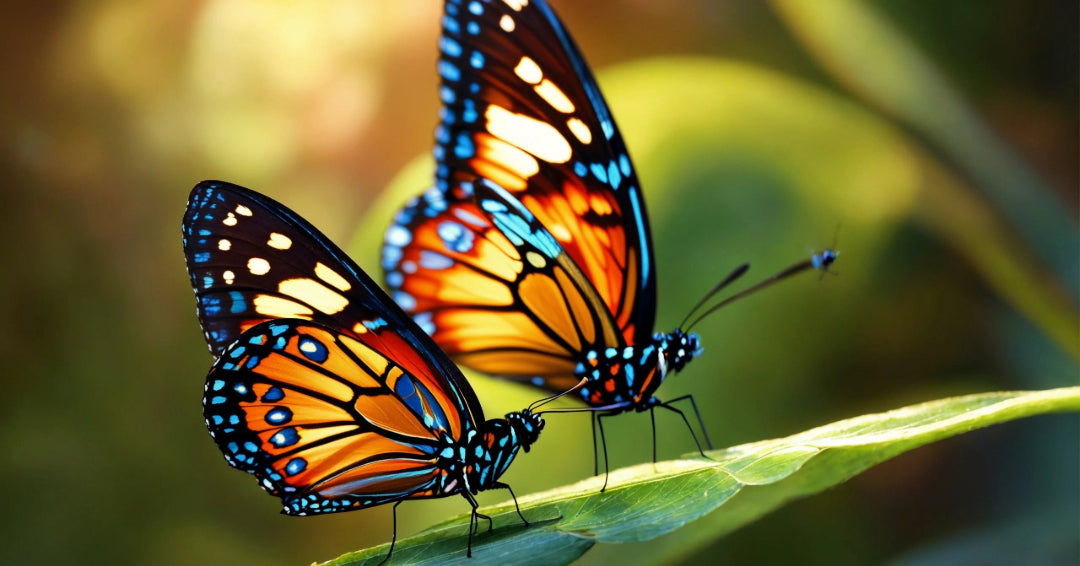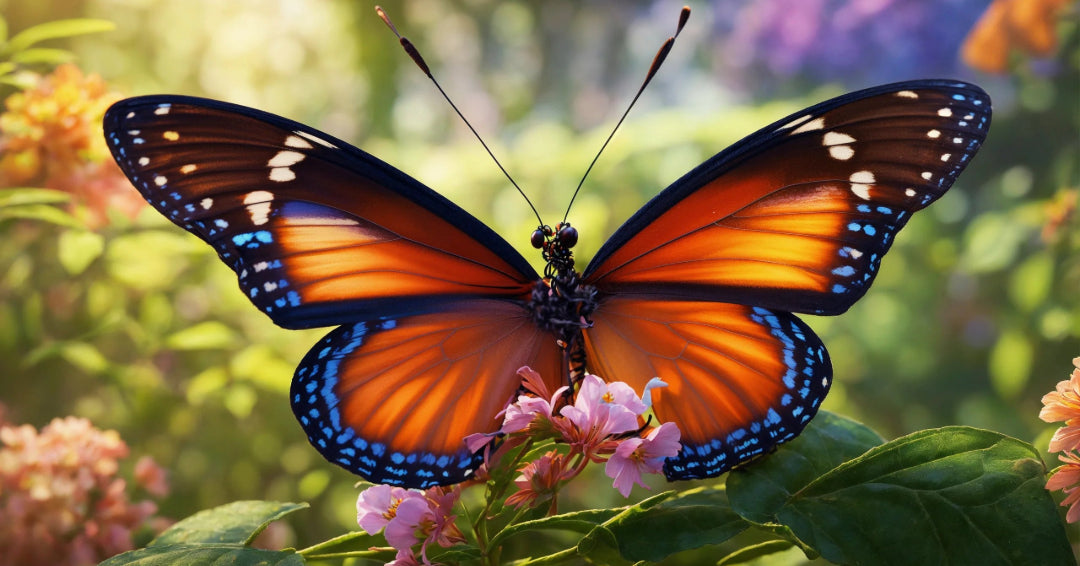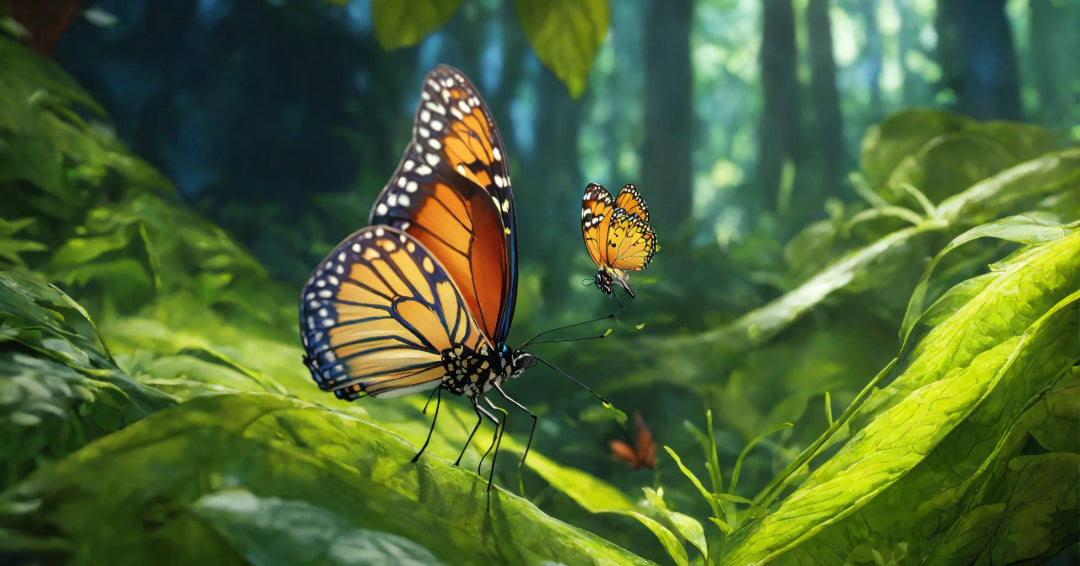
How do butterflies mate?
Butterfly mating is a sophisticated and exquisite procedure that is critical to the butterfly's life cycle. We'll look at how butterflies mate in depth, highlighting the procedures, behaviors, and strategies that make this union a natural wonder.
1- How butterflies mate is explained through their life cycle
Before delving into the specifics of how butterflies mate, it's critical to first understand their life cycle. Butterflies go through various stages, each of which serves a specific purpose in their development:
1-1 Egg
The life cycle of a butterfly begins with a female butterfly laying eggs on a specific host plant. Each butterfly species has a favorite host plant.
1-2 Caterpillar
When an egg hatches, it gives birth to a voracious caterpillar. Caterpillars gain mass by feeding on the host plant's leaves and stems.
1-3 Pupa
The caterpillar changes into a chrysalis at the end of its larval stage. Major modifications occur within this protective shell, changing the caterpillar into an adult.
1-4 Butterflies mate during the adult phase
The butterfly emerges from the chrysalis as an adult after the transition is complete. Mating occurs at this time because adult butterflies have a relatively short lifespan.
2- Butterfly Attractiveness characterizes mating behaviour
Male and female butterflies have distinct traits that make them appealing to one another. Mutual attraction is aided by bright colors, wing patterns, and pheromones. Butterflies can detect these signals and use them to choose a good mate.
2-1 The importance of colors and wing patterns on how butterflies mate
Butterfly wings are frequently decorated with vibrant colors and elaborate patterns. These characteristics can vary greatly between species. Males frequently employ these colors and patterns to attract female attention.
2-2 How butterflies mate is determined by pheromones
Pheromones are chemical molecules released by butterflies to communicate with other members of their species. Females emit pheromones to signal males about their availability. Males are pheromone sensitive and use their sense of smell to find them.

3- How butterflies mate varies from one species to another
How butterflies mate is a step-by-step procedure that varies significantly depending on species, but generally follows the following major steps:
3-1 How butterflies mate starts with finding a spouse
Finding a compatible spouse is the first step in the mating process. Males and females frequently fly aggressively in quest of visual and olfactory signals emitted by butterflies of the opposing sex.
3-2 Courtship, a crucial step in how butterflies mate
When a male spots a female, he performs a complicated courtship dance to entice her attention. Spiraling flights, back-and-forth movements, and the exhibition of his colorful wings can all be part of this dance.
3-3 The Pursuit, a difficult step in how butterflies mate
After capturing the female's attention, the male launches into an airborne pursuit to get closer to her. This stage might be difficult for the guy because the female may be picky and try to avoid him.

3-4 Physical contact, a fundamental step in how butterflies mate
Once the male has caught up with the female, he must make physical contact in order to mate. This is typically accomplished by gently grabbing the female's antennae or wings with his own.
3-5 Mating
Once physical contact has been established, mating takes place.. The reproductive organs of butterflies, located at the tip of the abdomen, join together to allow sperm transmission from male to female.
3-6 Egg formation, the result of butterfly mating
After mating, the female begins laying eggs on the suitable host plant. Caterpillar eggs hatch into the next generation of caterpillars.

4- Ephemeral lifespan of adult butterflies affects how they mate
It is crucial to note that the adult life of butterflies is relatively short, lasting only a few weeks to a few months. Because of their limited lifespan, mating is a fundamental necessity for their survival and the survival of their species.

5- Survival strategies influence how butterflies mate
Butterfly mating is more than just a physical act and a dance. There are also complex tactics for increasing survival and reproductive chances. Among these strategies are:
5-1 Finding mate through migratory behaviour
Some butterfly species journey considerable distances in search of mates or regions ideal for reproduction.
5-2 Camouflage increases butterflies' opportunities to mate
To avoid predators, some butterflies have wing designs that mimic leaves, flowers, or tree bark.

5-3 Mimicry maintains butterflies' chance of mating
Some butterflies mimic inedible or dangerous species un order to dissuade possible predators.
5-4 Egg protection, a survival duty after butterfly mating
Females frequently lay their eggs on plants that provide predator protection or nourishment for caterpillars.
5-5 Synchronized hatching, a wonderful step after butterfly mating
In some areas, butterflies may hatch at the same time to take advantage of seasonal resources.

6- Butterfly Mating's Beauty and Complexity
Butterfly mating is a stunning illustration of how nature has adapted to maintain species survival and reproduction. Every stage of the mating process is a piece of art by nature, from the beautiful flight of the males to the vivid colors of their wings to the subtle pheromones emitted by the females.
We can better grasp the importance of butterflies in ecosystems and the need to protect them by enjoying the beauty and intricacy of butterfly mating.

